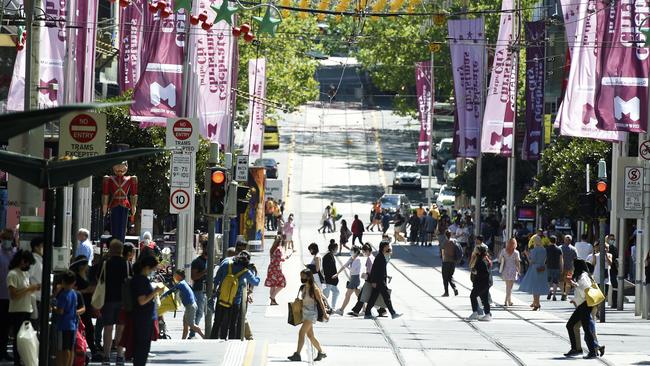Buyer confidence up but ‘depressingly low’
Households have started the New Year in a more upbeat mood thanks to a summer holiday break in rate hikes, but consumer confidence remains ‘depressingly low’.
Households have started the new year in a more upbeat mood thanks to a summer holiday break in rate hikes, but consumer confidence remains “depressingly low”, Westpac’s latest survey reveals.
Westpac’s January survey showed a substantial 5 per cent lift in the bank’s sentiment index to 84 points, the largest increase since April 2021, as Australians grew less pessimistic about the prospects for their financial situations and the economy in 2023.
With the Reserve Bank board not meeting in January, Westpac chief economist Bill Evans said the break in relentless rate hikes had likely provided a psychological boost to households, despite the consensus view for another 0.25-percentage-point rise to 3.35 per cent when the RBA board meets on February 7.
Sentiment among respondents with a mortgage climbed by 11 per cent, the survey showed.
“One likely explanation for the lift in confidence is that January was the first month since April last year that did not see an increase in the RBA cash rate. If so, we should be cautious about reading the January sentiment rise as part of a continuing trend,” Mr Evans said.
The survey’s confidence gauge reading of 84 points is well below the 100 point threshold, where optimists match pessimists.
“Sentiment is still depressingly low,” Mr Evans said. “The January read is in the bottom 10 per cent of observations since the mid-1970s. We have to go all the way back to the depths of the deep recession in the early 1990s to find a period where index reads were consistently below those seen over the last six months, including the improved print in January,” he said.

As the focus shifts towards the May budget and potential policies aimed at shielding vulnerable families from runaway energy prices, Jim Chalmers acknowledged the financial pressures.
“The responsibility that we embrace is to get wages moving again and we’re seeing that, provide cost-of-living relief – whether it’s early childhood education, or medicines or electricity bills – and we’re doing that as well,” the Treasurer said.
“But we’re doing it in a responsible way that will ease people’s cost-of-living pressures rather than make them worse.”
Despite the consumer gloom, spending is at record levels.
NAB head of market economics Tapas Strickland said “there remains a stark divergence between what consumers are saying and what they are doing”.
Mr Evans said the post-pandemic momentum would wane in coming months. “As we move through 2023, we expect inflation pressures to ease, slowly boosting confidence although it is likely to remain well below par during the year,” he said.
“Multiple legacies from the pandemic that boosted spending in 2022 despite weak confidence – including the reopening surge, a large, accumulated pool of excess household savings and the extremely tight labour market – will also fade in 2023.
“Consumer spending is expected to fall back into line with the below-par confidence reads, which we expect to persist through the year.”






To join the conversation, please log in. Don't have an account? Register
Join the conversation, you are commenting as Logout